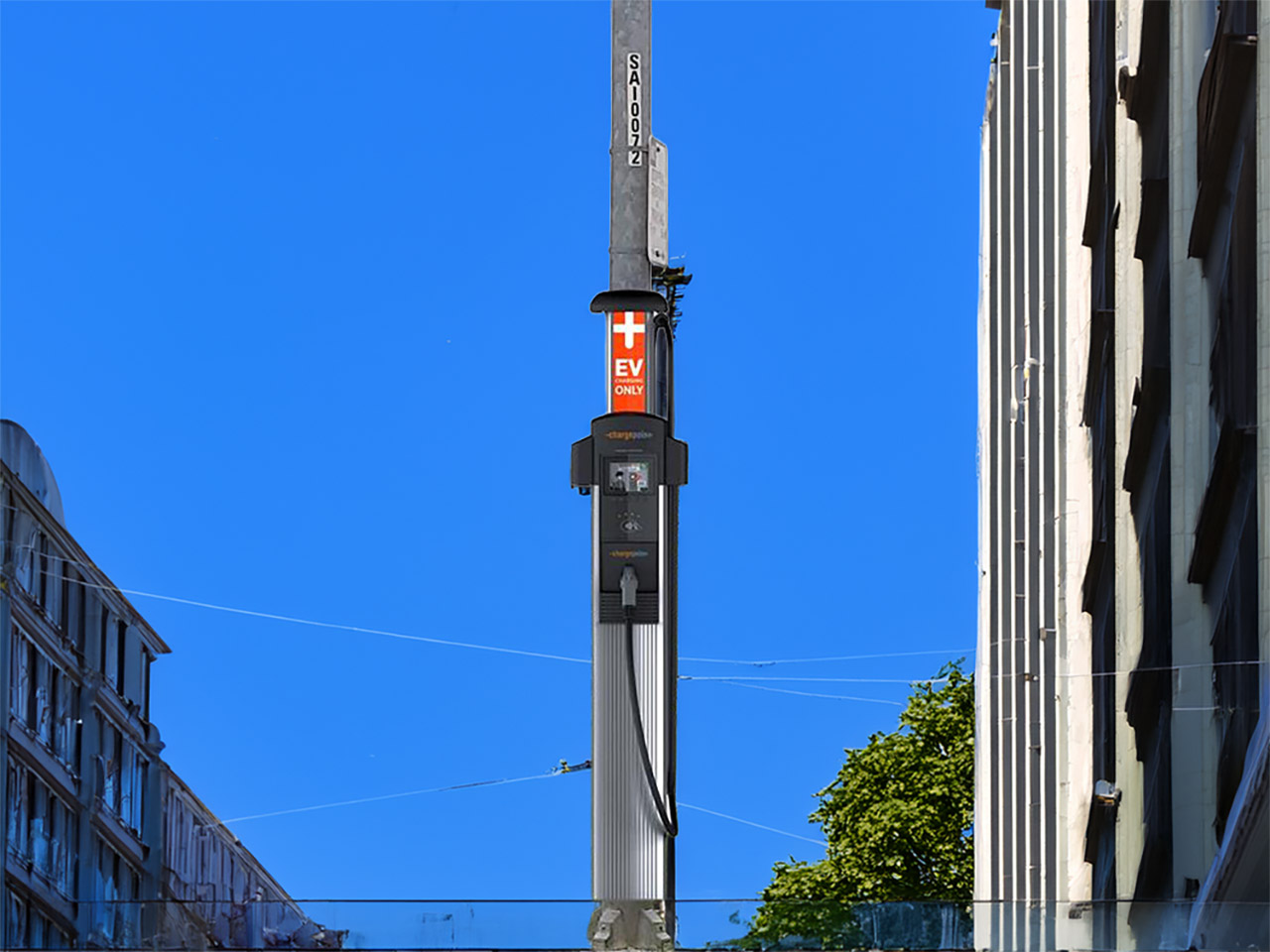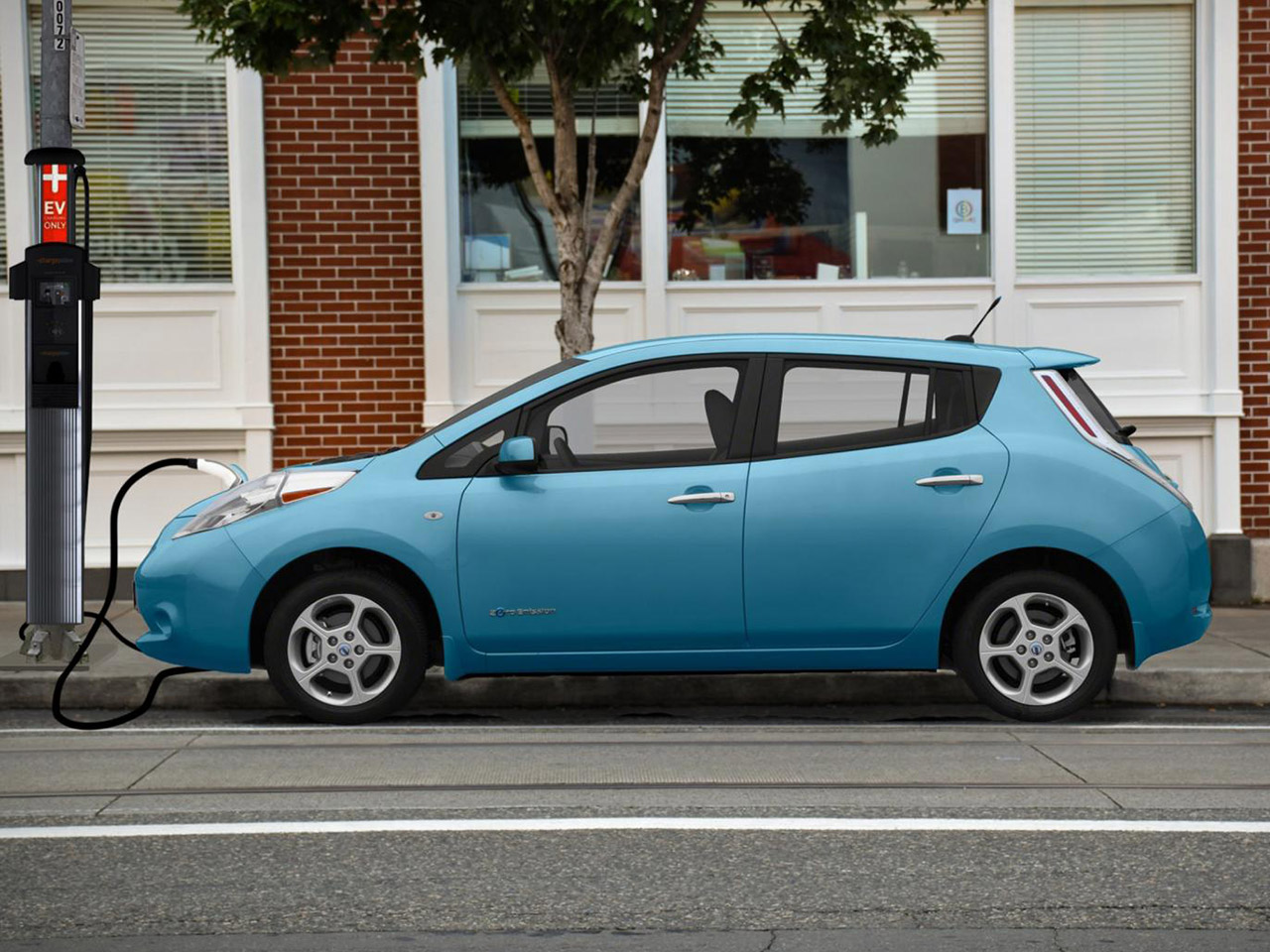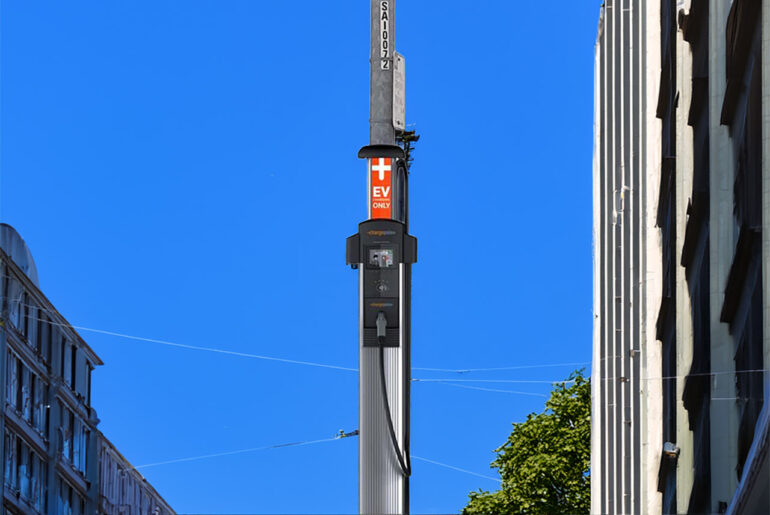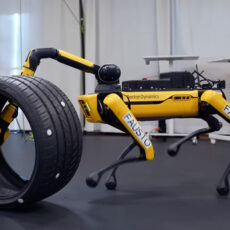
Photo credit: XB Hu/Penn State
Every city block is speckled with streetlights leaving Penn State researchers to come up with a new idea: turn these everyday fixtures into electric vehicle chargers. It’s a pretty straightforward solution to a problem that has really stumped urban planners and EV drivers – getting charging to be accessible to everyone, especially those who don’t have a garage or driveway and can’t afford to install a charger at home. This technology got tested out in Kansas City, Missouri and has the potential to revolutionize how cities help the transition to electric vehicles.

Photo credit: XB Hu/Penn State
People living in cities rely on street parking whether thats in an apartment block, a rental property or a densely packed downtown area. For them buying an electric vehicle is often just out of reach, its not because of the car itself but because of the charging problem. Many people don’t have the luxury of a private parking spot – which is a requirement for home chargers – and public charging stations can be a hassle, expensive to set up or just too far away. Penn State’s researchers, led by civil engineering professor Xianbiao Hu, spotted potential in a basic streetlight. Streetlights turn out to be pretty ideal locations for EV chargers because they are already wired up for power, right on the curb, and owned by the city.
- START DEAD BATTERIES — Instantly start dead batteries with 1000 amps of peak lithium power. Up to 20 starts per charge on engines up to 6.0L gas and...
- ULTRASAFE TECHNOLOGY — Engineered with patented spark-proof and reverse polarity protection for foolproof connections to any 12V vehicle - no...
- PORTABLE POWER BANK — Integrated power bank delivers emergency power to smartphones, tablets, and more. Recharges in 3 hours so it’s ready when it...
The team set out to come up with a simple goal: to install charging stations in places where people are already parking all the time. To do this they developed a way to choose the right streetlights to convert – they focused on two key things : demand and equity. They built AI models to predict where EV charging will be needed most by looking at data on how land is used, traffic patterns, local attractions, and existing charger locations – and then got feedback from the community to make sure the chargers werent just sticking them in wealthy or high-traffic areas, but also in the neighbourhoods that really need clean transportation options. This two-pronged approach led them to pick 23 streetlights in Kansas City to test out in the real world – and they worked with the city, local utilities and the National Renewable Energy Laboratory to get them set up.
Streetlight chargers cost less to install than regular stations because they used the existing power lines and poles. They charged faster because they connected to the local electrical grid with less competition from other vehicles. Users would also normally only use them for short periods because of the curbside parking rules – meaning places were turning over quickly. And the environmental benefits were significant – compared to regular chargers streetlight stations lowered gasoline consumption by 12% and greenhouse gas emissions by 11% – so they’re a pretty eco-friendly option for towns trying to keep their carbon footprint down.
The Penn State team is not done yet – they’re working on including more socioeconomic data into their models to make sure the chargers get to the communities that need them the most. Next on their list is weather data – temperature variations can affect battery efficiency and energy consumption.
[Source]










